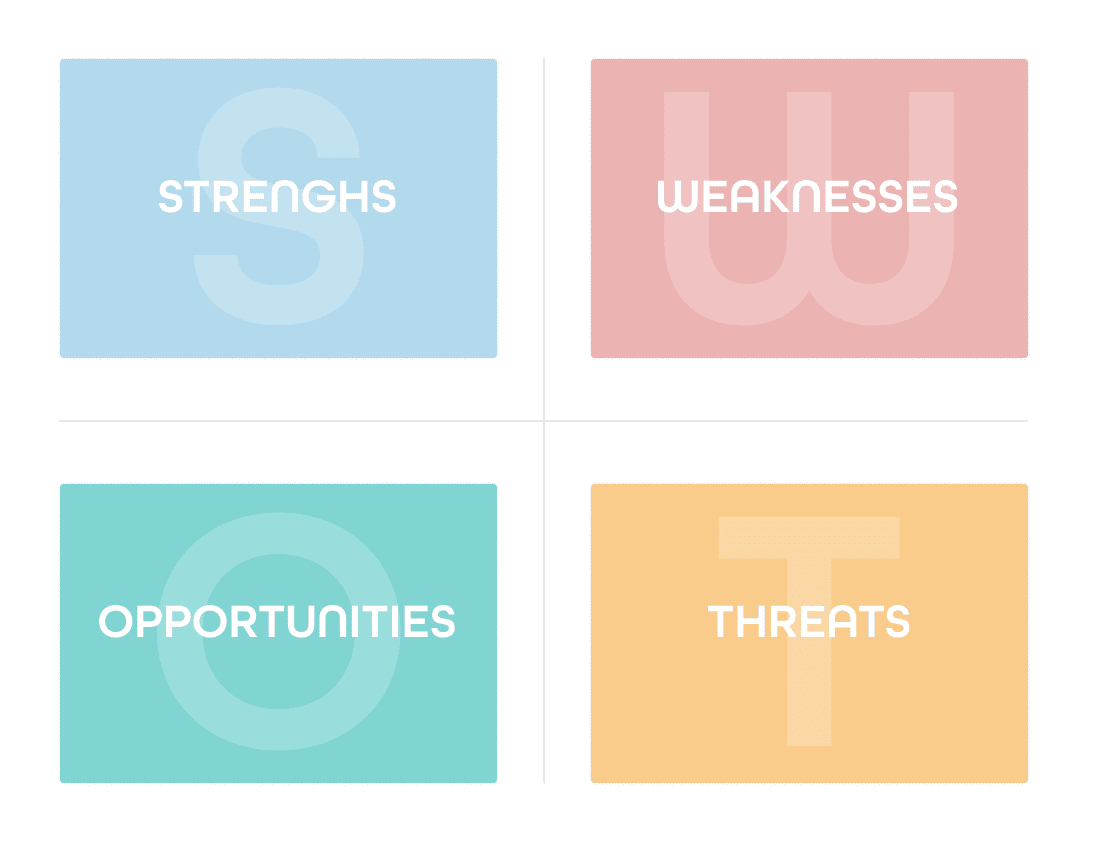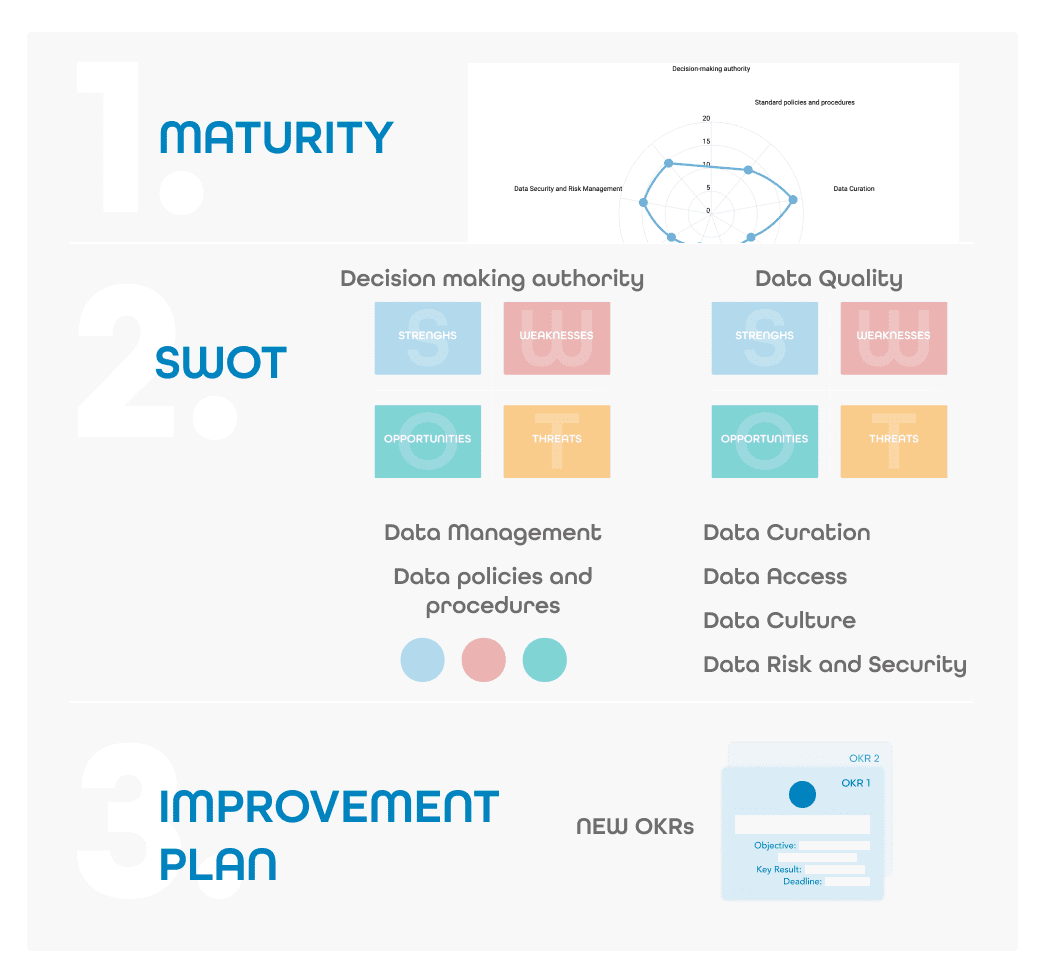This is the fourth episode of our series “The Zeenea Effective Data Governance Framework”.
Split into three seasons, this first part will focus on Alignment: understanding the context, finding the right people, and preparing an action plan in your data-driven journey.
[SEASON FINALE] This episode will give you the keys to build a concrete and actionable SWOT analysis.
Season 1: Alignment
- RUnderstand the context
- RGet the right people
- RPrepare for action
S01 E01
Evaluate your Data maturity
S01 E02
Specify your Data strategy
S01 E03
Getting sponsors
S01 E04
Build a SWOT analysis
Season 2: Adapting
- RCreate your personas
- RIdentify key roles
- RSet your objectives
S02 E01
Organize your Data Office
S02 E02
Organize your Data Community
S02 E03
Creating Data Awareness
Season 3: Implementing Metadata Management with a Data Catalog
- RGet to know your data
- RIterate your data catalog
S03 E01
The importance of metadata
S03 E02
6 weeks to start your data governance journey
In our previous episode, we discussed the different means to obtain the right level of sponsorship to ensure endorsement from decision makers.
This week, we will teach you how to build a concrete and actionable SWOT analysis to assess the company Data Governance Strategy in the best possible way.
What is a SWOT analysis?
Before we give our tips and tricks on building the best SWOT analysis possible, let’s go back and define what a SWOT analysis is.
A SWOT analysis is a technique used to determine and define your Strengths, Weaknesses, Opportunities, and Threats (SWOT). Here are some examples:
Strengths
This element addresses the things your company or department does especially well. This can be a competitive advantage or a particular attribute on your product or service. An example of a “strength” for a data-driven initiative would be “Great data culture” or “Data shared across the entire company”.
Weaknesses
Once your strengths are listed, it is important to list your company’s weaknesses. What is holding your business or project back? Taking our example, a weakness in your data or IT department could be “Financial limitations”, “Legacy technology”, or even “Lack of a CDO”.
Opportunities
Opportunities refer to favorable external factors that could give an organization a competitive advantage. Few competitors in your market, emerging needs for your product.. all of these are opportunities for a company. In our context, an opportunity could be “Migrating to the Cloud” or “Extra budget for data teams”.
Threats
The final element of a SWOT analysis is Threats – everything that poses a risk to either your company itself or its likelihood of success or growth. For a data team, a threat could be “Stricter regulatory environment for data” for example.
How to start building a smart SWOT analysis?
Building a good SWOT analysis means adopting a democratic approach that will ensure you don’t miss important topics.
There are 3 principles you should follow:
Gather the right people
Invite different parts of your Data Governance Team stakeholders from Business to IT, CDO and CPO representatives. You’ll find that different groups within your company will have entirely different perspectives that will be critical to making your SWOT analysis successful.
Throw your ideas against the wall
Doing a SWOT analysis consists, in part, in brainstorming meetings. We suggest giving out sticky-notes and encouraging the team to generate ideas on their own to start things off. This prevents group thinking and ensures that all voices are heard.
This first ceremony should be no more than 15 minutes of individual brainstorming, Put all the sticky-notes up on the wall and group similar ideas together.
You can allot additional time to enable anyone to add notes at this point if someone else’s idea sparks a new thought.
Rank the ideas
It is now time to rank the ideas. We suggest giving a certain number of points to each participant. Each participant will rate the ideas by assigning points to the ones they consider most relevant. You will then be able to prioritize them with accuracy.
Toolkits for your SWOT analysis
In our first episode, we helped you analyze your Data Maturity.
We suggested you build a SWOT analysis for each aspect. It is interesting to focus on those for which your company score was low and spend more time on them and draft an improvement plan as described below:
The Improvement Plan should update your OKRs, with new actionable activities and potentially new stakeholders with Objectives, Key Results and Deadlines.
For example, in order to improve the Data Culture, you may want to involve the head of HR to launch specific training sessions, and create new roles, responsibilities or job descriptions.
You could also want to change the Data Access Requests to certain Data Sources in order to gain more flexibility and fluidity.
Don’t miss the beginning of season 2 next week where we will help you adapt your organization towards becoming more Data-driven.
Copyright Zeenea 2021, all rights reserved.










